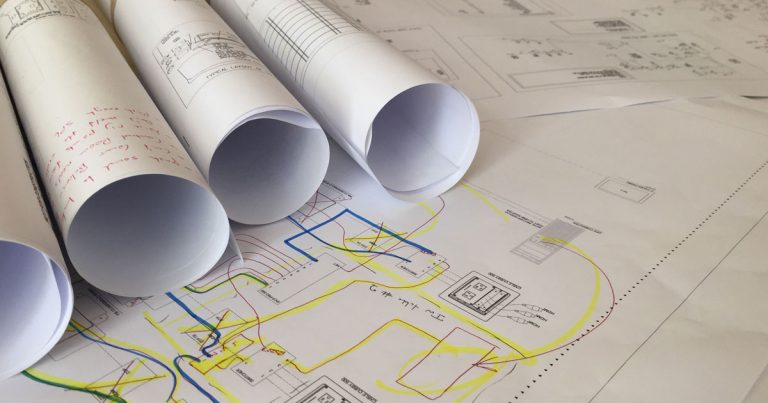When a construction project is underway, who is the best entity to hold the AV contract? Architects design buildings, and construction companies build them. That seems simple enough. While those are the cornerstones of a project, there can be dozens of other companies involved.
MEP, masonry, flooring, integrated building systems, paint, electrical, concrete, and steel are all critical parts of the building, and each has their own contract, handled by the Construction Manager or General Contractor. Just about any building will also have some type of Audio-Video included. As construction managers work to simplify what they do, they often place one scope of work under another. For many years it has been common for AV to be sub-contracted under the electrical contractor’s work. Is that such a good idea?
Smaller vs Larger
If you were to guess, you might think that all of the wires, lights, switches, and boxes that make up the electrical system would be a pretty big contract. And usually it is. Having an electrical contractor manage the AV contract might make sense if the AV portion of the project is small. However, in many projects, the AV aspects are a larger ticket item than the whole electrical contract. Conference rooms usually each have at least one large display (or more), plus speakers, microphones, audio conferencing, video conferencing, reservation systems, and digital signage. Collaboration technology is taking a more prominent role in corporate offices and typically carries a large price tag. Educational settings require more technology in both University and K-12 classrooms, in addition to performance spaces like auditoriums, theaters, and music spaces. Healthcare and healthcare education requires an entirely new level of video and audio capture tech, along with the security systems to keep those patient interactions private. The design, equipment, and installation of all those high-end pieces can easily outstrip the electrical wiring that is typical in those buildings. You need to ask yourself if subbing a larger piece under a smaller piece is the best way forward. Are you really going to save time and money with that strategy?
Markup Costs
When an electrical contractor is asked to supervise the AV for a project, they need to build fees into their pricing to handle the extra coordination work and liability. We have seen markups of 5, 10, or even 12 percent more added to the AV costs when the AV scope is under the Electrical Contract. When those Healthcare, University, and Corporate projects scale up by numbers like that, it can increase costs by much more than any efficiencies you might gain by subbing the AV contract. And if the client/owner wants to evaluate the bids, and interview individual AV contractors, the AV scope of work must be its own separate scope of work.
Communication Transmission
Getting information about AV through your electrical contractor can short-circuit the communication flow. Building electrical systems is a vastly different specialty from AV systems. Both are critical, and years of experience within each of those disciplines makes for efficient communication. When the construction manager or client has a question about those aspects of a project additional layers of communication can be confusing. The client asks the CM, the CM asks the EC, who asks AV, who transmits the answer back through each step. All those steps can cause significant impedance to excellent communication. When the owner or construction manager can contact the AV designer or contractor directly, it keeps everyone on the same wavelength. Working with the right people, in the right specialties, can make or break your project.
When you work with an independent AVL designer, like Acoustics By Design, you get much more than just another layer of the electrical systems. Our designers are experts at engineering the right components with the architecture, and construction, for all types of projects. You can be sure you’re getting unbiased recommendations, detailed drawings, bid packages, and construction administration to keep your project moving smoothly all the way down the line.

Good stuff Tim. We wrestle with some of these same issues, being yet another layer under the AVC. Odd thing is, the layers seem to be inversely proportional to how much the owner cares about that aspect of the project.